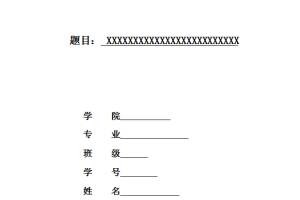摘 要:明代是中国山水画艺术史上的一个重要阶段,明代初期以浙派为主流,艺术上师承南宋院体风格,代表画家戴进,吴伟;明代中期,以史称吴门的苏州为中心,形成了“吴门画派”取代了浙派在画坛上的地位,该派继承和发展了高尚笔墨意趣和“士气”“逸格”的元代文人画传统,体现自得其乐的精神生活;明代晚期,“浙派”“吴派”衰落,在上海地区涌现出若干更重视笔墨表现力与文化修养的文人山水画派,其中以董其昌为代表的“华亭派”影响最大,由于文化在商业和社会思想的进步紧密联系着艺术的自身发展,所以明代山水画有着强大的势力和深远的影响,本文重点通过对明代初期,中期和晚期代表画家及作品的深度分析来阐释明代山水画的表现境界。
关键词:自然,明代山水画;表现境界;
Abstract: The Ming dynasty in the history of Chinese landscape painting is one of the important stage, the Ming dynasty in zhejiang sent for the mainstream, art of the southern song dynasty contacts body style, delegate painter DaiJin, WuWei; In the middle of Ming dynasty, with the history said that wu of the door for center of suzhou, formed “wu door school” replaced the zhejiang sent in’s position in the painting, this sent an inheritance and development of rich and noble words “morale” “escape case” in yuan dynasty of traditional literati paintings, embodies the spiritual life of the field; The late Ming dynasty, “zhejiang pie” “wu is sent” decline, emerge in Shanghai area some attach more importance to ink expressive and culture scholars of landscape painting, among them with DongJiChang, as a representative of the “huating pie” greatest influence as the cultural in business and social thought of the progress of the art close contact their own development, so the Ming dynasty landscape painting has a strong power and the profound influence, this article through to DongJiChang and his works to the analysis of the performance of the Ming dynasty landscape painting this border.
Key words: the Ming dynasty landscape painting; State; DongJiChang
目 录
摘要……………………………………………………………………………………1
关键词…………………………………………………………………………………1
引言……………………………………………………………………………………2
一 .明代山水画发展脉络的回眸……………………………………………………2
二.明代山水画题材的选择………………………………………………………….3
(一)鲜明的地域特色…………………………………………………………3
(二)时空性题材表现……………………………………………3
三.明代山水画的技法表现………………………………………………………….4
(一)笔墨……………………………………………………………………….4
(二)明代山水的笔墨………………………………………………………….5
四.明代山水画的真我表现………………………………………………………….5
五.明代山水画的表现境界………………………………………………………….6
结语 …………………………………………………………………………………6参考文献………………………………………………………………………………7





